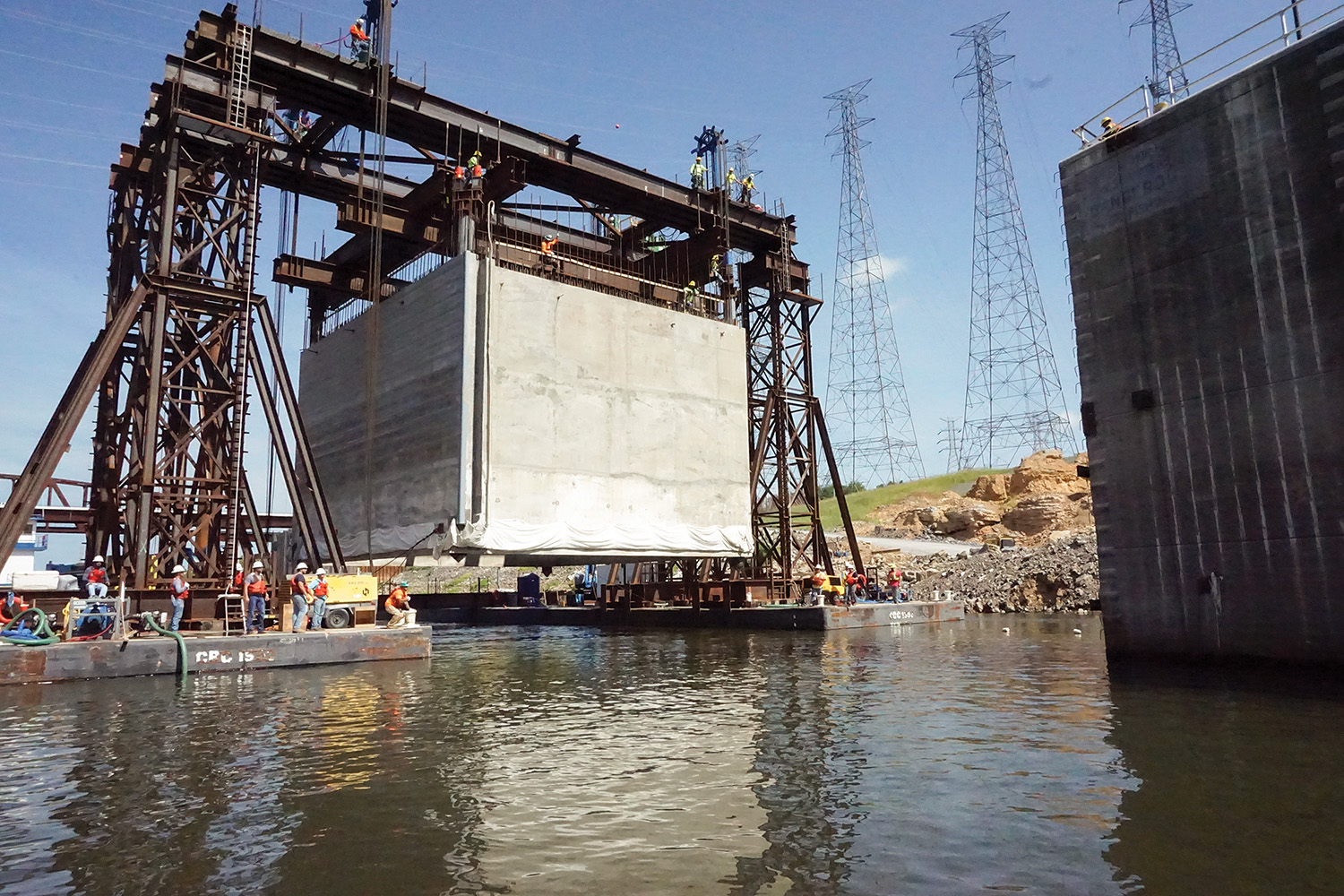The Nashville Engineer District set its first 1.3-million-pound concrete shell August 6. The lift-in shell forms a part of the downstream cofferdam for the new Tennessee River lock under construction at Kentucky Dam, a Tennessee Valley Authority project.
Vessel operating restrictions will be in place in Kentucky Lock’s lower approach channel through August 14. Both upbound and downbound vessels will be restricted to a speed no greater than a slow walk from the downstream miter gates to the downstream Highway 62 bridge—a reach length of approximately 1,400 feet. Vessel pilots will receive specific instructions for these speed restrictions by the lock operator.
This speed restriction is intended to minimize wheel wash impacts to the shell-setting equipment and to the empty shell after it has been placed, and until such time that sufficient concrete can be placed to stabilize it. The contractor’s dedicated helper boat, the mv. Maverick, will assist all vessels through this constricted area.
Lifting and setting this massive concrete shell represented a critical milestone toward completion of the new 1,200-foot-long navigation lock and involves techniques never previously attempted, according to the Corps.
The project involved a large and specially constructed catamaran gantry barge system that lifted a large concrete box (or shell) off of the barge it was cast on. An animated video illustrating the gantry barge’s operation is available at https://youtu.be/SEraoQwQAVs.
The rectangular shell is approximately 46 feet wide, 51 feet long, and 33 feet tall with concrete walls about 1 foot thick. The gantry barge moved about 200 yards to position itself in the set-down location. Once it was precisely positioned by a system of eight cables, the gantry barge lowered the shell into the water onto a prepared foundation on the bedrock.
Four spuds on the shell were adjusted to put the weight of the shell on the foundation and off the gantry barge. The gantry barge was then disconnected from the shell and moved 200 yards downstream.
This was the first of 10 shells to be installed and there will be opportunities to view the installation of the remaining shells over the next year, the Corps announced.
“Reaching this point in the project is a monumental accomplishment that is a testimony to a lot of hard work by the Kentucky Lock Team,” said Lt. Col. Cullen Jones, Nashville District commander. “The Corps, our partners at Tennessee Valley Authority, and our contractor, Johnson Brothers, have been working very well together to overcome the many challenges facing them on a project of this magnitude to make this day happen.”
The Corps is constructing a new navigation lock at Kentucky Dam to reduce the significant bottleneck that the 600-foot-long current lock causes on this important waterway. Because of high Tennessee River traffic levels and the current lock’s size, the delay times for commercial tows going through Kentucky Lock average from eight to 10 hours—near the highest in the country.
“The new lock will eliminate these delays and result in a much more efficient river transportation system,” Jones said.
The total cost for the Kentucky Lock project is $1.25 billion with about $455 million expended to date, or about 36 percent complete. Funding bottlenecks that have plagued the project since construction commenced in 1998 have been lifted in the last three years. This has allowed progress to proceed full tilt for the downstream cofferdam and has allowed the advertisement of the next large construction contract for the project, the Downstream Lock Excavation. This contract is expected to be awarded by September 30.




